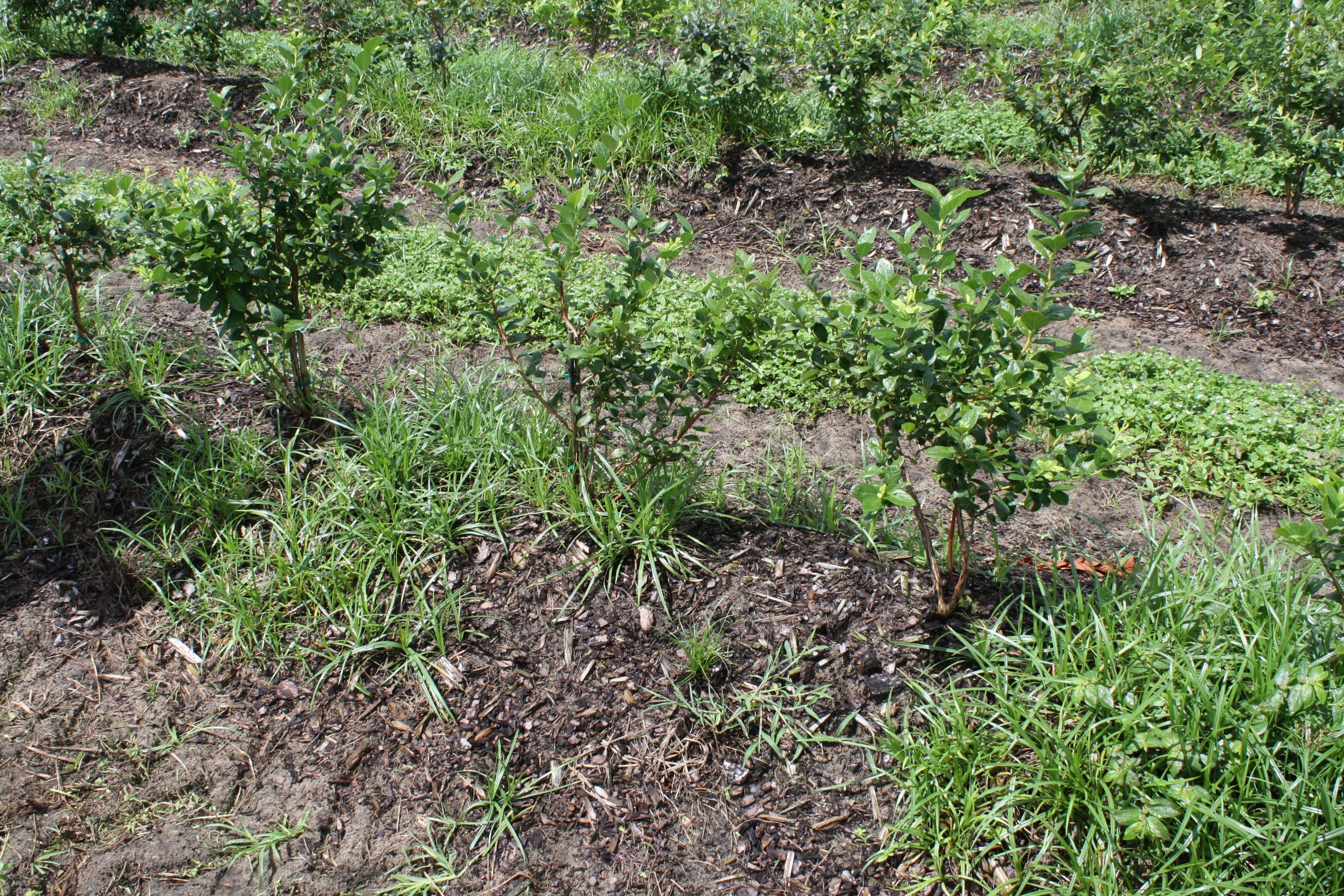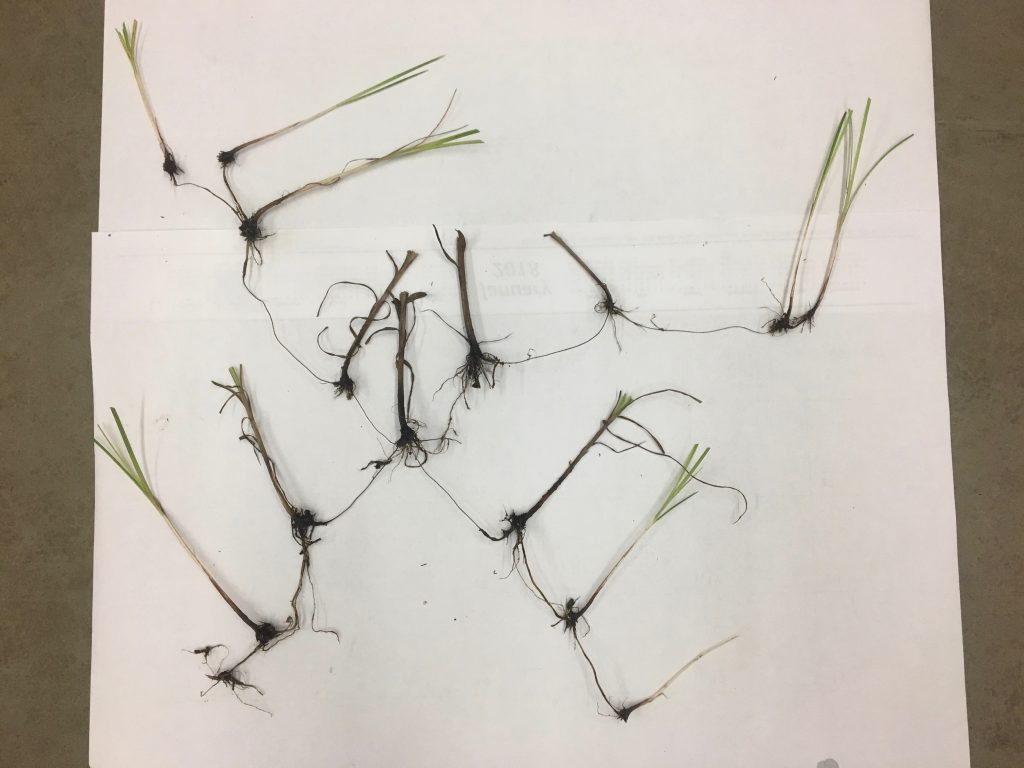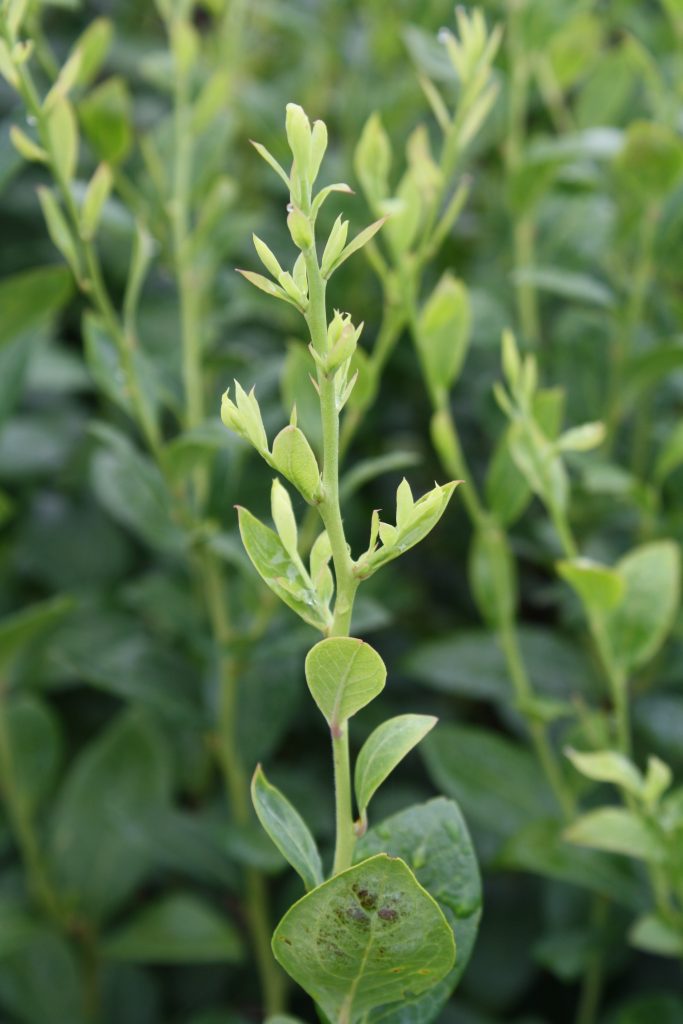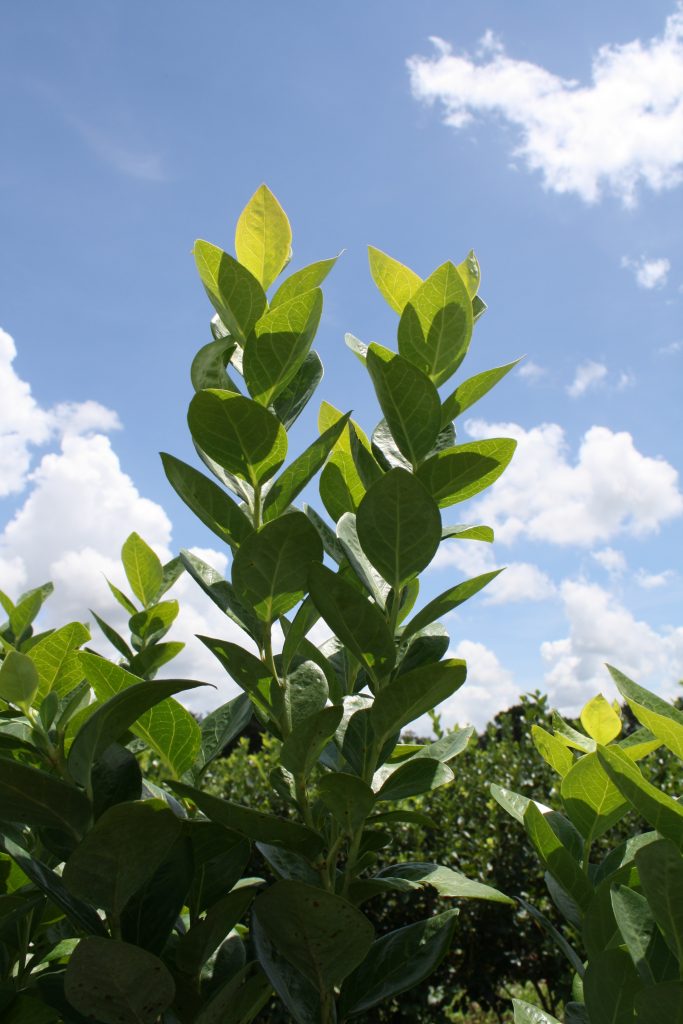
By Peter Dittmar
All weeds are problematic in blueberry production because they compete for water and nutrients, hinder harvest crews and decrease yields. One of the most problematic weeds in blueberry is nutsedge (Figure 1). The two species of perennial nutsedge in Florida are yellow (Cyperus esculentus) and purple nutsedge (C. rotundus). These weeds are difficult to control because of their perennial habit, reproduction through tubers and minimal control options.
Identifying the difference between the two species can be difficult. Purple nutsedge has purple inflorescence, a rounder or boat-shaped leaf tip, and the tubers are produced on longer chains of two to eight tubers (Figure 2). Yellow nutsedge has a yellow inflorescence, a sharper leaf tip, and tubers are produced at the terminal end of the rhizome from the mother tuber. Both species have triangular stems near the base, which is one way to differentiate them from grass species. The tuber production of both species causes the weed to expand underground in a radial fashion and will appear as patches in the blueberry field.

CULTURAL CONTROLS
There are cultural practices that growers can use for management of nutsedge. Nutsedge prefers wet areas, so controlling the amount of water given to blueberry bushes can slow the growth of nutsedge. There is a delicate balance between crop needs and using watering as a nutsedge control method.
Hand-weeding can be costly and time consuming. Removing the underground tuber is most important to prevent the chance of regrowth. The waste must be moved away from the crop row and field edges. To prevent weed spread, clean equipment between fields if nutsedge tubers are attached.
In vegetable production, repeated cultivation events can exhaust the carbohydrates in the tuber and over time can reduce the population. However, the shallow root systems prevent this method from being used in blueberry production. University of Florida is conducting research on steam, flame, and burndown herbicides to create a similar situation of decreasing tuber carbohydrates until tuber death.
Some growers have used landscape fabric for weed control and cultural purposes. The landscape fabric provides excellent control of grass and broadleaf weeds. When nutsedge is very young, the shape of the leaves can pierce the plastic without competition from other weeds. The limitation of control methods allows the nutsedge to become more problematic.
HERBICIDE OPTIONS
Currently, there are no preemergence herbicide options for nutsedge control in blueberry.
The two postemergence herbicide options are glyphosate and halosulfuron. Both of these herbicides control the foliage and translocate to the tuber to provide further control. Glyphosate will control broadleaf, grass and nutsedge weeds and should be applied in the crop row and not in the grass strips between rows. Halosulfuron will provide control of nutsedge and some broadleaf weeds. Halosulfuron can be applied to the grass strips between rows to limit the spread of the nutsedge.
The translocation of the herbicide is important for nutsedge control; however, it can cause injury to the blueberry bushes. Glyphosate injury will appear as chlorosis (yellowing) of the new growth, and new leaves will be smaller in size (Figures 3 and 4). Halosulfuron will cause similar blueberry injury and possibly reddening of the leaf veins. Some blueberry cultivars are more susceptible to halosulfuron injury than others.
To minimize injury from the postemergence herbicides:
* Calibrate the sprayer before each application
* Correctly calculate the amount of product
* On young bushes with green stems, use a type of non-porous protectant along the base, or treat only the areas where nutsedge patches occur.
* Read the herbicide labels for the correct application rates based on the formulation that you are using.
SUMMARY
Yellow and purple nutsedge are problematic weeds in many specialty crops, but especially difficult in blueberry due to the minimal control options. Nutsedge control requires year-round maintenance and continued monitoring. Include multiple control methods and vigilance for nutsedge control.
Peter Dittmar is an assistant professor at the University of Florida in Gainesville.











